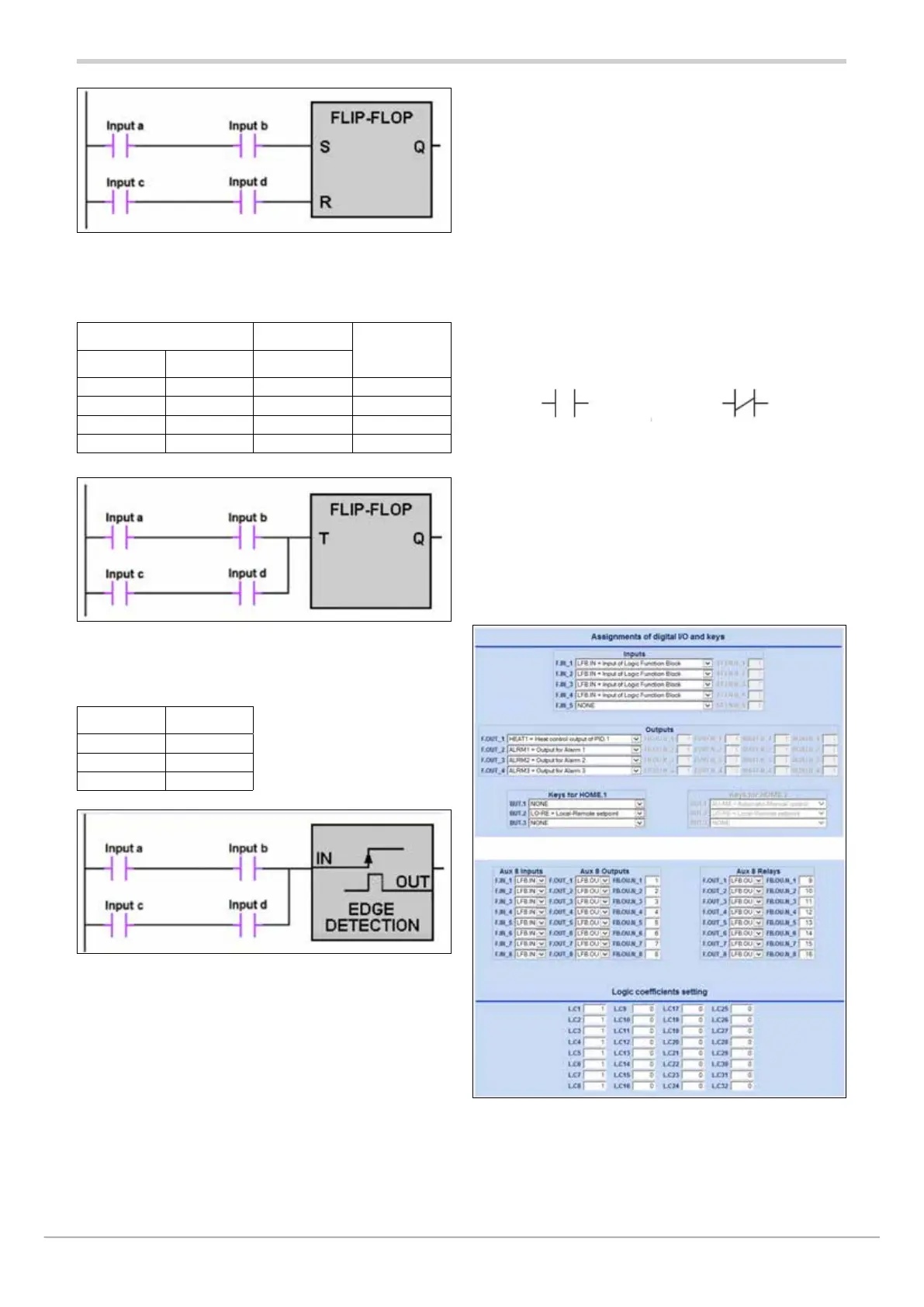80209C_MHW_850-1650-1850_01-2020_ENG_pag. 230
TYPE 5 - SR flip-flop
The Logical Function Block output will be as shown in the
table of truth of SR flip-flop appearing below.
Input Output
Action
S R Q
n+1
0 0 Qn No Change
0 1 0 Reset Output
1 0 1
1 1 Undefined Undefined
TYPE 6 - T flip-flop
The Logical Function Block output will be as shown in the
table of truth of T flip-flop appearing below
Input Output
T Q
0 1
1 0
TYPE 7 – Edge detection
An impulse with a duration of one cycle of execution of logical
functions (100 ms) will be generated on the Logical Function
Block output every time a source of an increase in input IN is
intercepted
You can name the logic function block so that it can be easily
recognized for future use
The name will be saved as part of the “configuration recipe”
only on the PC. If you copy the configuration to other con-
trollers, the controller to which the configuration is copied
will not contain these descriptive names.
5.16.3.3. Configuring input variables
Configure the four input variables a, b, c and d, one at a
time. On the pull-down menu, select the variable to be as-
signed to the input.
The options are:
• ON, input always ON;
• OFF, input always OFF;
• one of the values in the groups of Digital input state,
Digital output state, and Function state variables listed
above in paragraph “5.16.2. Groups of variables” on
page 224.
By clicking the input’s icon you can reverse its reference
state from normally open (NO) to normally closed (NC) and
vice versa.
This cannot be done if you chose ON or OFF on the pull-
down menu.
NO NC
If digital inputs IN1, IN2, IN3, IN4, IN5 are among inputs a,
b, c and d, and you want them to be used only in Function
Blocks, you have to configure the function Func = LFB.IN
for them.
If you want to transmit the output state of a logic function
block (LOGIC FUNCTION BLOCK OUTPUT 1…16) to an
output OUT1…OUT4 of the controller, you have to configure
the function F.out = LFB.O for these outputs and specify in
FB.O.N the number of the function block output.
Complete the configuration by giving a descriptive name to
each input so that it can be easily recognized for future use.
